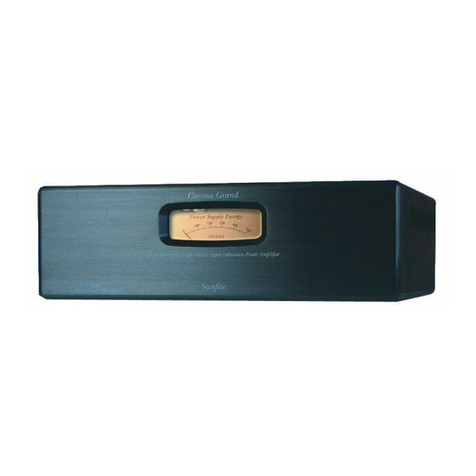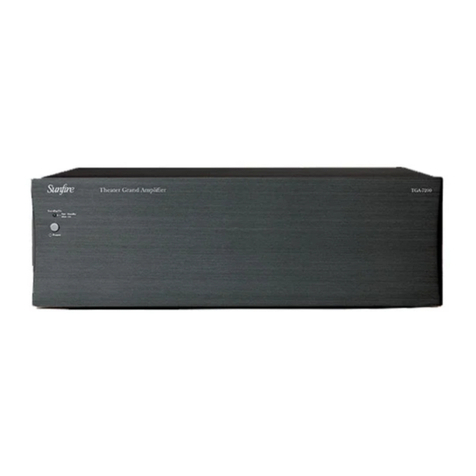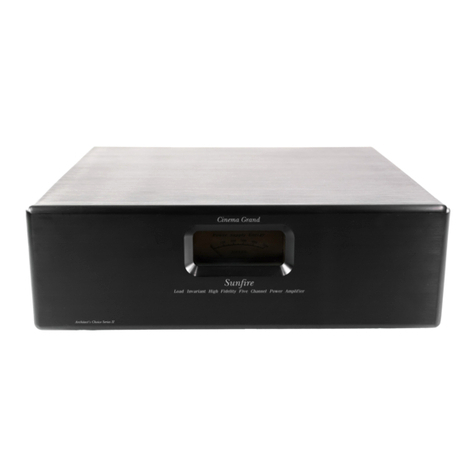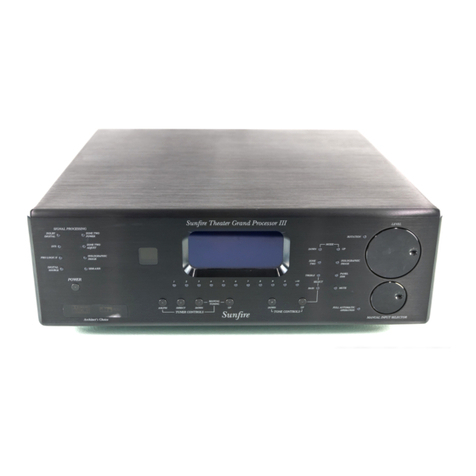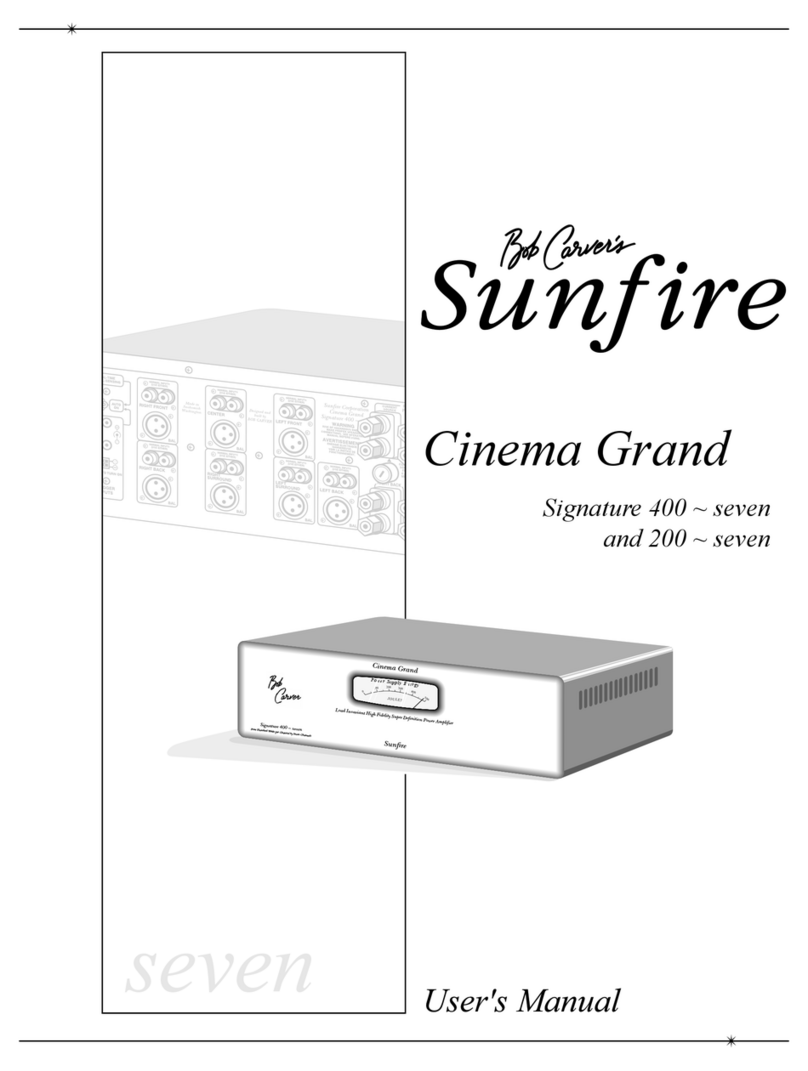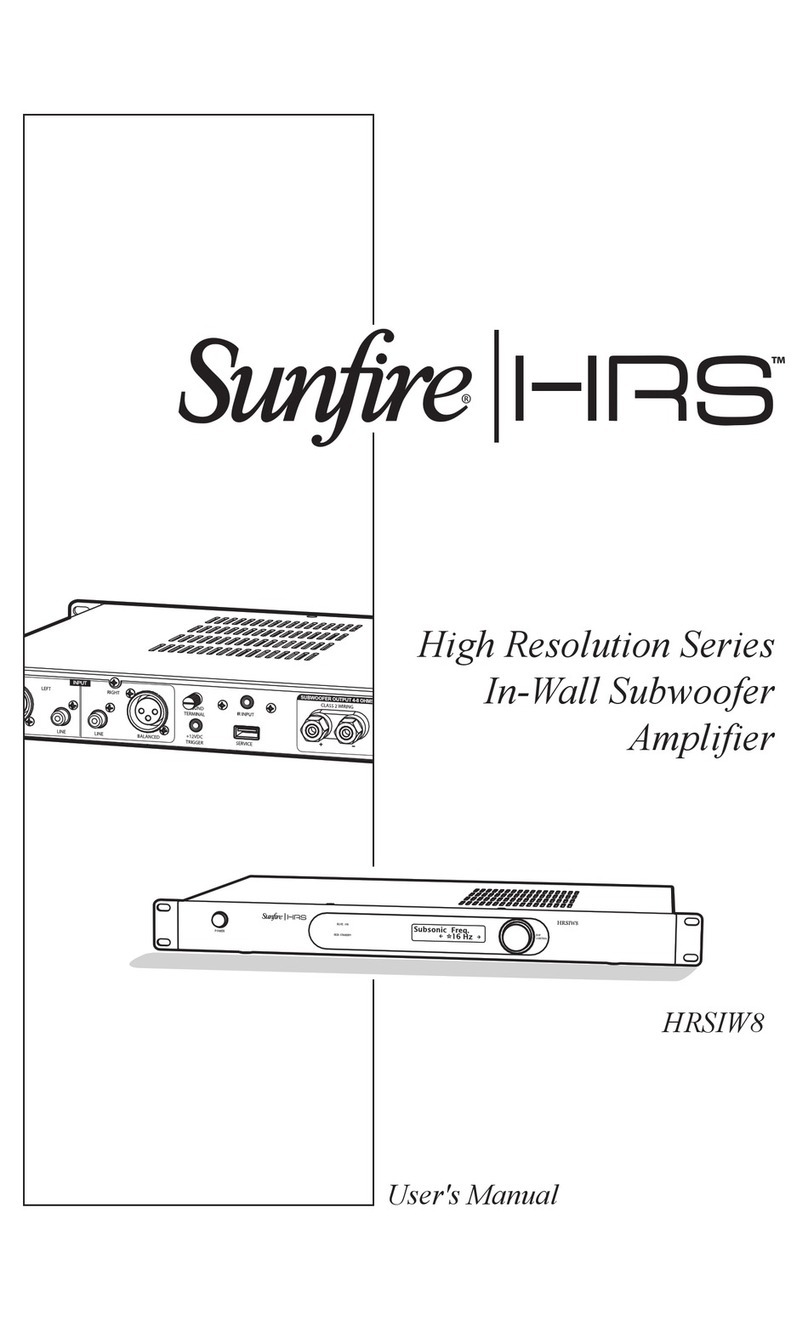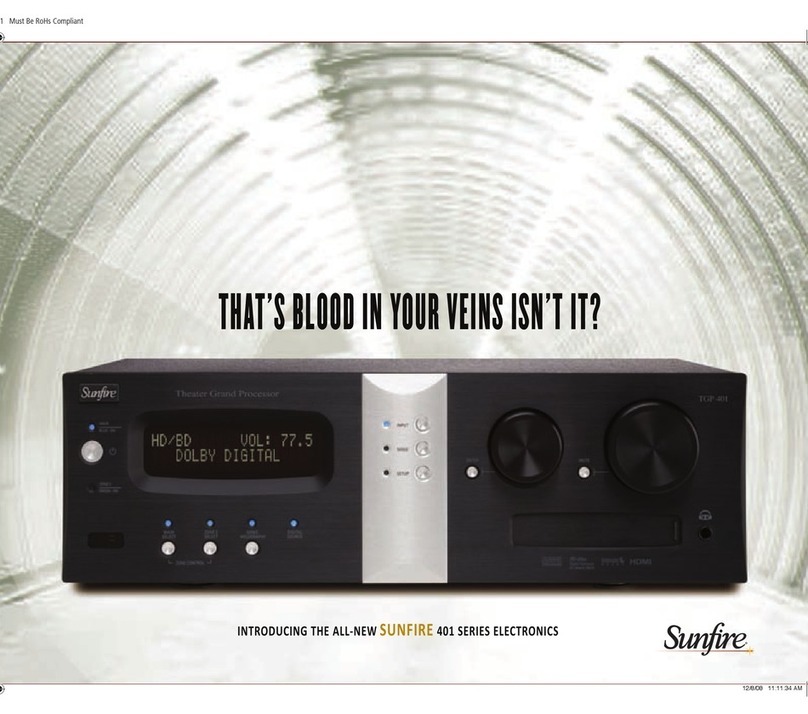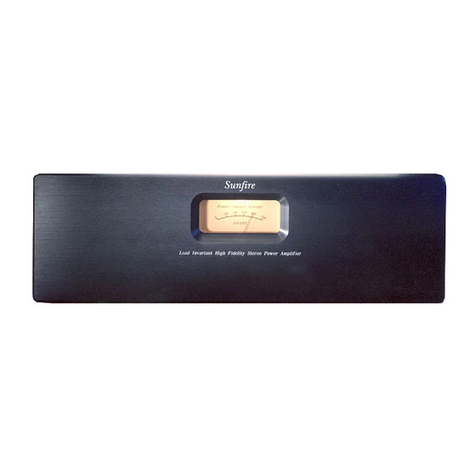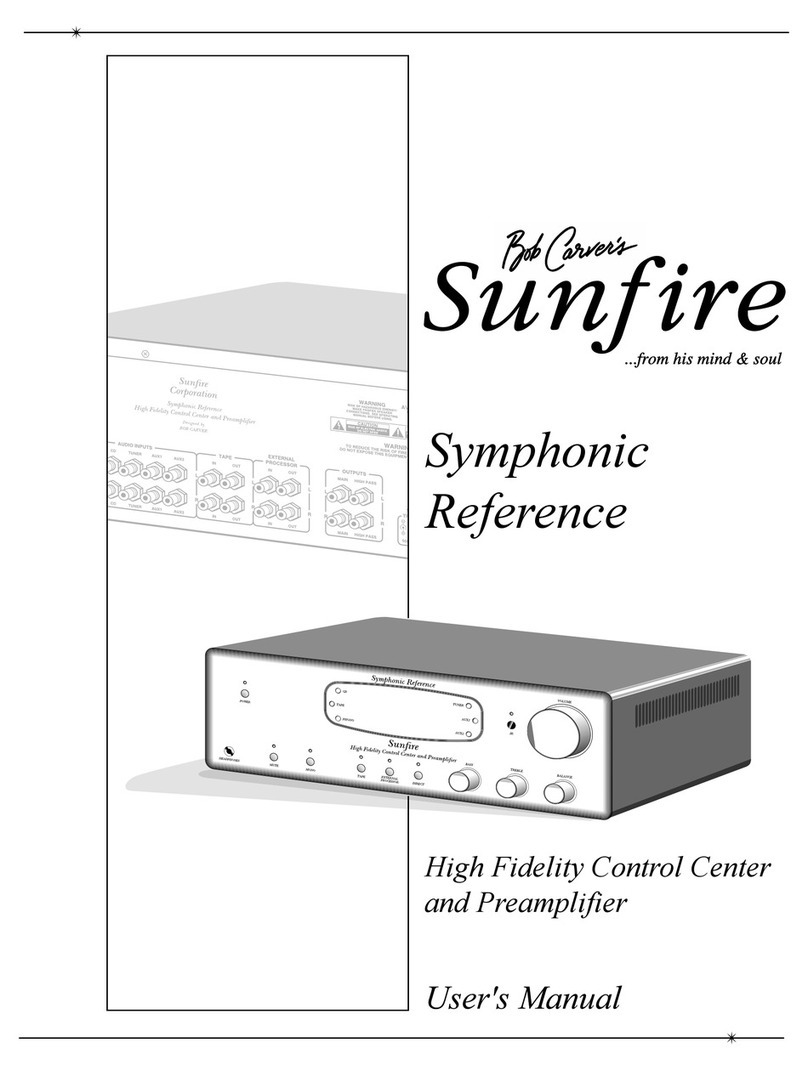
User's Manual 7
CHAPTER 1
Read and follow all safety instruc-
tions shown on pages 2 and 3.
Observe the following precautions
when choosing a location for your
ampliÞer:
• Do not cover any of the ven-
tilation slots on the bottom or
sides.
• Do not place a preampliÞer
directly on top of the power
ampliÞer.
• Protect it from prolonged
exposure to direct sunlight and
other direct sources of heat,
such as heating vents and
radiators.
• Do not expose the unit to rain
or moisture. If ßuid or a for-
eign object should enter the
unit, immediately turn off the
power and contact your SunÞre
Dealer.
• Avoid excessive exposure to
extreme cold or dust.
• Do not place heavy objects on
top of the unit.
AC Power Considerations
Ensure that the unit is plugged
into an outlet capable of supplying
the correct voltage speciÞed for your
model. The outlet should be capable
of supplying 15 amps at 120V.
Care
If you need to clean the front
surface, Þrst turn unplug the power
cord from the AC supply, and then use
a dry cloth, rubbing with the grain. Be
careful not to scratch the Þnish. Avoid
strong cleaning agents.
Connection Tips
Before setting up your new sys-
tem, please consider the following :
Always make sure that your
components are all turned
OFF, or unplugged before
making or changing any
connections.
• Make sure that the power
cords of all your components
are attached to the same outlet
or at least to the same circuit.
This will reduce the possibility
of a ground loop in the system.
• Make sure that the total current
draw does not exceed the cur-
rent rating of the outlet.
• Use the XLR inputs if your
preampliÞer has XLR outputs.
These balanced connections
provide superior noise rejec-
tion.
• Whenever possible, route the
power cords away from the
signal cables or speaker wires
to prevent any hum or inter-
ference heard in the speakers.
• Choose reliable hookup cables.
They should be fully shielded
and as short as possible.
• Some patch cords can be a
very tight Þt and there is usu-
ally a preferred method of get-
ting them off. Some have to be
removed with a twisting action.
Be gentle or you may damage
the jacks of your ampliÞer, or
other components.
• Some audiophile cables should
be hooked up in one direction,
these are usually marked with
arrows.
• It is usual for the right channel
patch cord plugs to be red and
the left channel connections to
be white, grey or black.
Installation
12 VDC Trigger
If you have a Symphonic Refer-
ence PreampliÞer, it has a Trigger
terminal which supplies 12 VDC
whenever the preampliÞer is turned
on. This voltage can be used to turn
on the ampliÞer.
Use all standard safety
precautions and make sure
all the equipment is discon-
nected before making any
connections.
Any 1/8" mono to mono (two-wire)
interconnect cable will sufÞce to con-
nect the 12 V trigger output from the
preampliÞer to the ampliÞer.
The voltage range for the ampli-
Þer's trigger input is 5 to 18 Volts DC.
Do not exceed 18 Volts on this input.
(CAUTION: Do not connect AC line
voltage to this input!)
The input impedance of the 12 V
trigger input is approximately 600Ω
(20 mA @ 12 V).
